The Northern Naturalist #7
Fierce Weather, Gentle Expression: Rough-legged Hawks; October: Time for Rarities; Review of Web Watching: a Guide to Webs and the Spiders That Make Them, plus an Interview with a Western Tanager
Fierce Weather, Gentle Expression:
Rough-legged Hawk
Once the weather begins to turn toward frost and wind chill, I know it’s time to start watching for Rough-legged Hawks. This buteo has one of the northernmost ranges and breeding ranges of any bird. They are circumpolar (living all across the Northern Hemisphere).
In my part of the world, they are strictly fall-to-early-spring visitors. There are records in September, but their numbers don’t pick up until October. Most will pass through on their way to wintering in the Great Plains, but some will linger through the early winter in open areas.
For a raptor, Rough-legs have a gentle-looking expression. I suppose getting a “cozy” feeling from a bird of prey is a little off, but compared to some other raptors, rough-legs do give this appearance.
Their scientific species name, lagopus, means “hare foot,’ and refers to the feathering that extends all the way down the leg. Another buteo, Ferruginous Hawk, also has this covering, and it used to be called “American Ferruginous Rough-legged Hawk,” but “Ferruginous” is enough to make the name specific, and that’s its name today.
Rough-legs come in six styles—light morph and dark morph (morph means a distinctive plumage pattern) and there are male, female, and juvenile patterns in each morph. The light morph patterns are slightly more common than dark morphs across the entire population, and one may outnumber another more in discrete areas. West of Minnesota and Manitoba, dark, juvenile Ferruginous Hawks may appear similar to dark, juvenile rough-legs, but the Ferruginous Hawks have white commas in the wing, in addition to somewhat different profiles.
Rough-legged Hawks fly with shallow, smooth, loping, or flexible beats. To some, the loping makes their flight seem “sloppy.” They glide with a slight dihedral in the wing, and they seem buoyant. Rough-legged Hawks have long wings with broad tips. Light-morph birds have clean, white primaries (long flight feathers), a dark belly, and a white tail with a dark band or bands. Dark morph birds will have dark heads and breasts, but will also have white primaries and tails.
They have a fluffy plumage, feathered legs, and small bills and feet—all adaptations to the extreme cold they live in. Gyrfalcons and Peregrine Falcons are the only other birds who tend to live as far north as Rough-legged Hawks. All three nest on cliff ledges on tundra, and they prefer open country in the winter as well, lingering in fields and marshes rather than woodlands.
When perched, they may have a hunched shoulder appearance with a small head (for a large hawk). Their folded wings will reach at least the tip of the tail. Over 80% of their diet consists of small mammals (voles, lemmings, mice), but they will eat small birds, other mammals, and cold-blooded prey. They hunt from a perch most of the time. If need be, they will make their own perch by hovering. They are the only buteo I have seen hovering above one place for any length of time (The much smaller American Kestrel is the only other raptor I see doing this.)
Rough-legged hawks flap more and use thermals less than other buteos. This makes them more likely to consider crossing over water than most raptors (other than ospreys and falcons).
Their median passage date here is Halloween, and by the time November passes, we don’t see many more migrating at watch sites. Then we have to look for birds that haunt bogs, marshes, or open fields. I love to think of how far they have come, and to watch them herald the coming of winter.
October: Time for Rarities
October is the time to bird on the North Shore of Lake Superior. Sure, it’s fun in the other three seasons, and it’s always beautiful, but I and many other birders block out time to explore from Duluth (at the western tip of the big lake) to the Canadian border (150 miles) and back again in late fall.
It’s a great time for several reasons: 1) the quantity of migrating birds—on days with westerly winds, a river of birds courses overhead, 2) the first taste of winter birding arrives with the Snow Buntings, Bohemian Waxwings, and Pine Grosbeaks, 3) the auto traffic has finally diminished after tourist season, and 4) above all, it’s the time to search for rarities.
From early October on until the first deep freezes (usually sometime in December), a lot of unexpected bird species have been found on the North Shore. In addition to accidental (seen in the state fewer than three times in the past ten years—note that there are sub-categories I won’t address here) species, a lot of casual (seen three to eight years of the past ten) species turn up. Plus, there are plenty of fun regular species to seek too.
No rare bird is rare everywhere. Of course, endangered species would be less numerous by definition, but other species have a range somewhere on earth where they are “regular.” They’re expected there. This means that a rare bird in another area is there because something is wrong or unexpected.
Why? Why is this time and place better than others? Here we come up against an awful lot that we do not know. However, there are theories, and I’ll go through a few of these. All begin with the assumption that a rare bird shows up somewhere because something has gone wrong with its migratory journey. It should be noted that this is merely an assumption. In spite of all the current efforts to track migration, some of which are big jumps forward in our understanding, we know little in particular about the migration journeys of most individual birds.
Misorientation: This means something is wrong with the bird’s migration system. It headed the wrong direction from the breeding grounds, or suffered some injury to its navigational ability. This might cause the bird to set out in the wrong direction, or to mis-read the magnetic fields or other ways birds use to navigate.
Disorientation: At some point in its journey, a migrating bird gets lost and confused, due to weather like bad fog, heavy rain, so it either decides to, or is forced to abandon its course. For birds that are migrating long distances, this must happen a lot, but in most cases, it seems that it’s a temporary phenomenon, so that most birds in this situation would be able to pick up where they left off and get back on track.
Drift: “Drift” describes what happens when a bird is caught in circumstances that carry it off-course. For example, most songbirds prefer to migrate in calm conditions with an easy tailwind. As they travel long distances in a single night, though, they frequently move out of the favorable conditions prevailing when they began their flight. If they are over land and fly into a rainstorm, they will drop down and roost until conditions improve. (Birders love these “fallouts” which allow us to see birds that are usually migrating above us undetected.) What if the bird is over water when it encounters rain? If it hasn’t traveled too far, it may turn around and return to its starting point.
If it has gone so far that this seems impractical to the bird, or, more likely, if the wind conditions take over and propel the bird further ahead or to one side, this drift can cause both the route and the timing of the bird to be off. Presumably, many of these instances aren’t catastrophic, and the bird can continue its migration a little off schedule or with a minor course correction. However, it seems likely that this is what has happened to many of our rare birds. This theory is attractive, because the conditions are common, and the theory doesn’t need to posit some kind of injury or disorder that caused the bird to go astray (not to say that this theory precludes those explanations for some rarities). Drift is a sub-set of disorientation. The bird may know full-well that it is off course, but high winds, or persistent, route-altering winds carried it away from its intended route, and now either the way is lost or the timing of migration is wrong.
Dispersal: Sometimes birds end up moving out of their breeding area for natural reasons, usually related to not enough food, either due to some natural disaster, or to population cycles out-stripping food cycles (like the lemming population crashing, in the case of a small mammal). Finch irruptions (see News and Notes in this issue) are an example of this kind of dispersal. This could be why some rarities find their way to us.
There are other hypotheses for why particular rare birds show up, but this is enough for this short article. Birds who suffer one of these or another cause will be lost or delayed in their migration. Westerly winds will carry them toward the north shore of Lake Superior (it actually runs NE to SW), where they will concentrate just like all of the regular migratory species seen here throughout the fall. Because of their migration delays, they show up late, and that’s why October (and later) produces more rare birds here.
King Eider, Common Eider, Band-tailed Pigeon, Purple Sandpiper, Ancient Murrelet, Yellow-billed Loon, Williamson’s Sapsucker, Cassin’s Kingbird, Tropical or Couch’s Kingbird, Clark’s Nutcracker, Phainopepla, Sage Thrasher, Northern Wheatear, Sprague’s Pipit, Gray-crowned Rosy-Finch, Thick-billed Longspur, Black-throated Sparrow, Golden-crowned Sparrow, Bullock’s Oriole, Black-throated Gray Warbler, and Black-headed Grosbeak have all been seen on the North Shore in October.
Particular weather patterns can make the appearance of rare birds at least somewhat predictable. If we have persistent westerlies over a few days or weeks, we might see more western rarities. Hurricanes might alter migration routes or send birds hundreds of miles out of their range. Following Hurricane Helene this past week, Sooty Terns were seen in Indiana, and multiple Magnificent Frigatebirds showed up in Kentucky. (These are both species that are regular in the Caribbean.) Once a bird is that lost, who knows where it will show up; maybe in Minnesota in October.
Web Watching: A Guide to Webs and the Spiders That Make Them, by Larry Weber, Stone Ridge Press, 2018 available for purchase at https://thephotonaturalist.com/product/web-watching-a-guide-to-webs-the-spiders-that-make-them/ $16.95
Several years ago, I served as the interim executive director of our local zoo. One of the problems the zoo was dealing with was lower attendance. Some marketing research revealed that one of the reasons the year before had tanked was that the zoo had installed a seasonal exhibit of spiders! Even during the time I was there, a year later, people would call and check to be sure the spiders were gone before they ventured back to the zoo. The next year, we went with butterflies.
It’s a pity that so many people are afraid of spiders, but no one I know has done more to correct the phobia than Larry Weber. Larry is another friend of mine and as fine an all-around naturalist as you’ll meet. He has written many nature-themed books, including Spiders of the North Woods and Butterflies of the North Woods. Some of Larry’s books are truly inventive: In a Patch of Goldenrods is about goldenrods, of course, but also all the other organisms found in a patch. Another book, Autwin: the Season Bridging Fall and Winter explains the changes between two seasons. He has several books on phenology (the study of natural phenomena and the timing of their appearance), including some that go through the annual calendar with short essays for each day. I have edited a couple of Larry’s books, and I enjoy them all.
When I worked as a naturalist at state parks, I occasionally hired guest speakers, and if I could get Larry, I booked him, because the same enthusiasm and extensive knowledge found in his books came through in his talks. I used to introduce him by saying that years earlier, he had introduced me to dung beetles—insects that use scat for food or shelter. “So now, every time I see a pile of scat, I think of Larry.”
Web Watching addresses the subject beginning with webs, which is the way we are most likely to encounter spiders. The first section of the book explains the biology of spiders and webs and silk. The book explains how to see the structure of spider webs and link them to species. This is followed by species accounts and a section of photo galleries (there are photos and illustrations throughout the book). Many of the photos were taken by Larry, or by the publisher, Sparky Stensaas, who has also published two of my books. You might think a book about spiders would be drab, but this one is not. Close-up, spiders exhibit many colors, and the book is attractively-designed and easy to use.
Spiders are among the most common organisms on earth. If you think you have seen a bunch of them around your yard, I assure you, there are a bunch more that you haven’t noticed! The great majority of spiders are harmless to us, and their web-weaving, in particular, makes them interesting creatures worth studying and looking for.
Recently we’ve had dewy mornings that are perfect for highlighting spider webs. I have enjoyed seeing webs, and if I can’t remember something about the web or the spider, I consult Larry Weber’s books. They are authoritative and always interesting. I suppose it was inevitable that a naturalist named Weber would write about spiders, but I don’t take it for granted.
News and Notes
The Finch Network has released its annual Winter Finch Forecast:
Link to Winter Finch Forecast 24-25
Based on reports of key food sources in southern Canada, the group makes predictions about which species may come south in large numbers during the coming winter. While all birds are influenced in their movements by food supply, finches (here we even call them “winter finches” sometimes) are known for coming and going based on seed crops. This group includes Pine Grosbeak, Evening Grosbeak, Purple Finch, Pine Siskin, Red Crossbill, White-winged Crossbill, and Redpoll.
The forecast also reports on food sources for Blue Jay, Red-breasted Nuthatch, and Bohemian Waxwing. These three plus the seven finch species are “irruptive,” which means they will flood an area of the range in unusual abundance some years. If they were entering new territory, we’d call them “invasive.”
Because this year has been spectacularly good for berries, cones, and other seeds, it will likely be a lackluster finch year in the U.S. Most birds will have plenty of food in their breeding range, so they won’t need to leave.
Northern Minnesota may be an exception, because Northwest Ontario is one of the few areas with a sub-par cone crop, due to widespread insect infestations, drought, and fires.
The Winter Forecast was started over twenty years ago by Ron Pittaway, who was joined by Jean Iron for a number of years until it moved over to the Finch Network. It’s always fun to read, and over the years, the predictions have often been accurate. This year’s is tentative and most of the predictions are hedged. I suppose that’s just a reflection of reality, but I prefer bolder statements. Go ahead and be wrong! It will give us something to talk about all winter.
Fall Finally On the Way
The weather has finally cooled off here, and today was really the first day that felt like autumn to me—a couple of weeks later than usual. The colored leaves are late too, and given the odd summer (drenched early and dry and warm late), I’m not sure what the final color result will be. I saw my first (very early) Pine Grosbeak of the season in Two Harbors yesterday, and I have heard some Lapland Longspurs over my yard.
Interview with a Western Tanager
Northern Naturalist (NN): What is it with you?
Western Tanager (WT): What do you mean? I don’t like your tone.
NN: It’s late September. You’ve all left the state for the year.
WT: Of course, it gets cold there—really cold.
NN: Right, but this has become a sad, annual ritual for me: realizing in late September that there is no longer a chance to add you to my Minnesota life list this year.
WT: Breaks my heart, but migration is serious business. So sorry we couldn’t accommodate you (sarc).
NN: I have seen you out west. You’re gorgeous.
WT: You are correct.
NN: It’s just that, of all the regular species in Minnesota, you’re the only one I have yet to identify in Minnesota.
WT: Well, get busy.
NN: Oh, I have. I have been looking for you for 36 years, and I have missed you many times. I have driven to North-central Minnesota a number of times. You seem to like it there; you show up at feeders in May, and by the time I get there, you’re gone.
WT: We don’t have time to linger. We don’t really belong here, and we need to get back to the West.
NN: But you’re a regular species!
WT: Yes, we’re there every year, but not many of us come. And as you said, we don’t stick around.
NN: Once my friend, Sue Weber, in Grand Marais, told me that a neighbor had you at their feeder, just down the road. When I arrived the neighbor told me you had left twenty minutes earlier, but he was sure you’d be back. I had a lovely day there on their porch, but you didn’t return.
WT: Like I said, lots to do.
NN: How about the time I was chatting with the naturalist at Sibley State Park. He got a call (on his rotary phone, just to let you know how long ago this was); the caller had a funny bird at her feeder. He gave me the description—it was you! He hung up, and when I asked, “Where is it?” He said, “Oh, I didn’t think to ask.” He didn’t know who called either.
WT: Not MY fault.
NN: This spring, I was riding in the car of a non-birder on a trip to far southern Wisconsin. We were a couple of hours south of Duluth, when news of a sighting in West Duluth popped up on my phone. Missed you again.
WT. I can understand that missing me makes you sad. Just try again next May—a little harder.

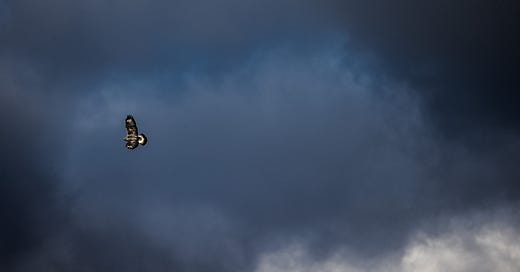



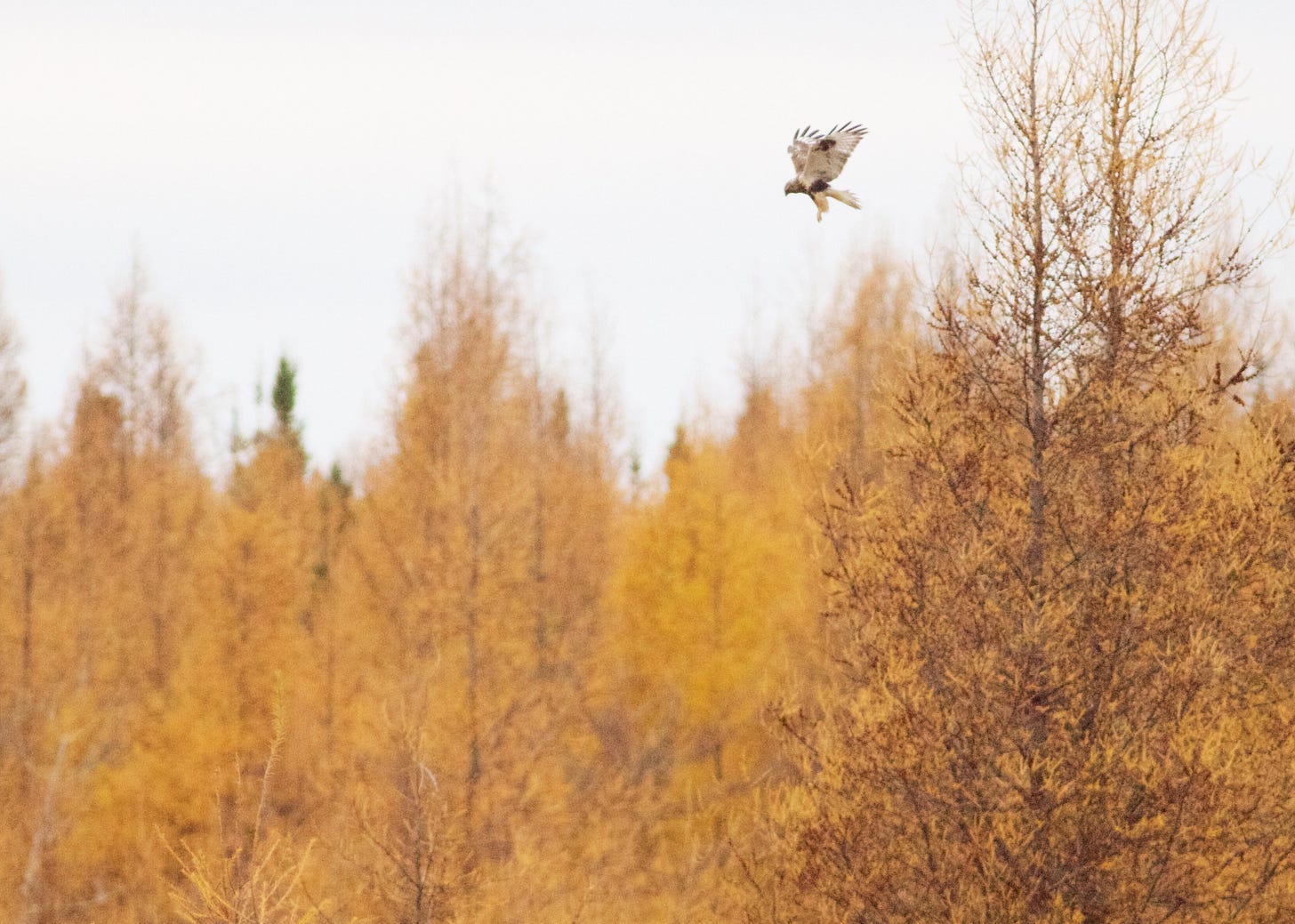


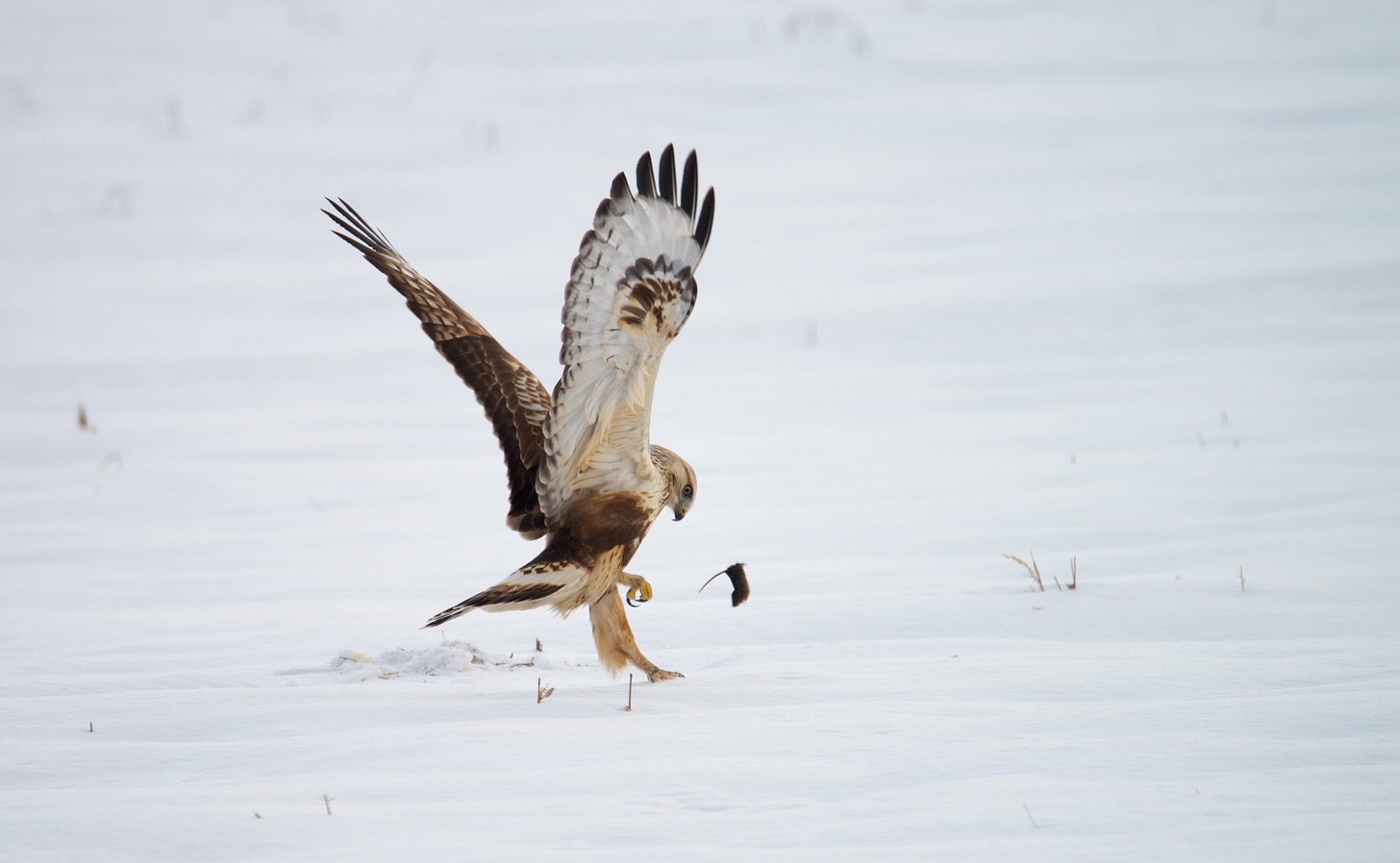
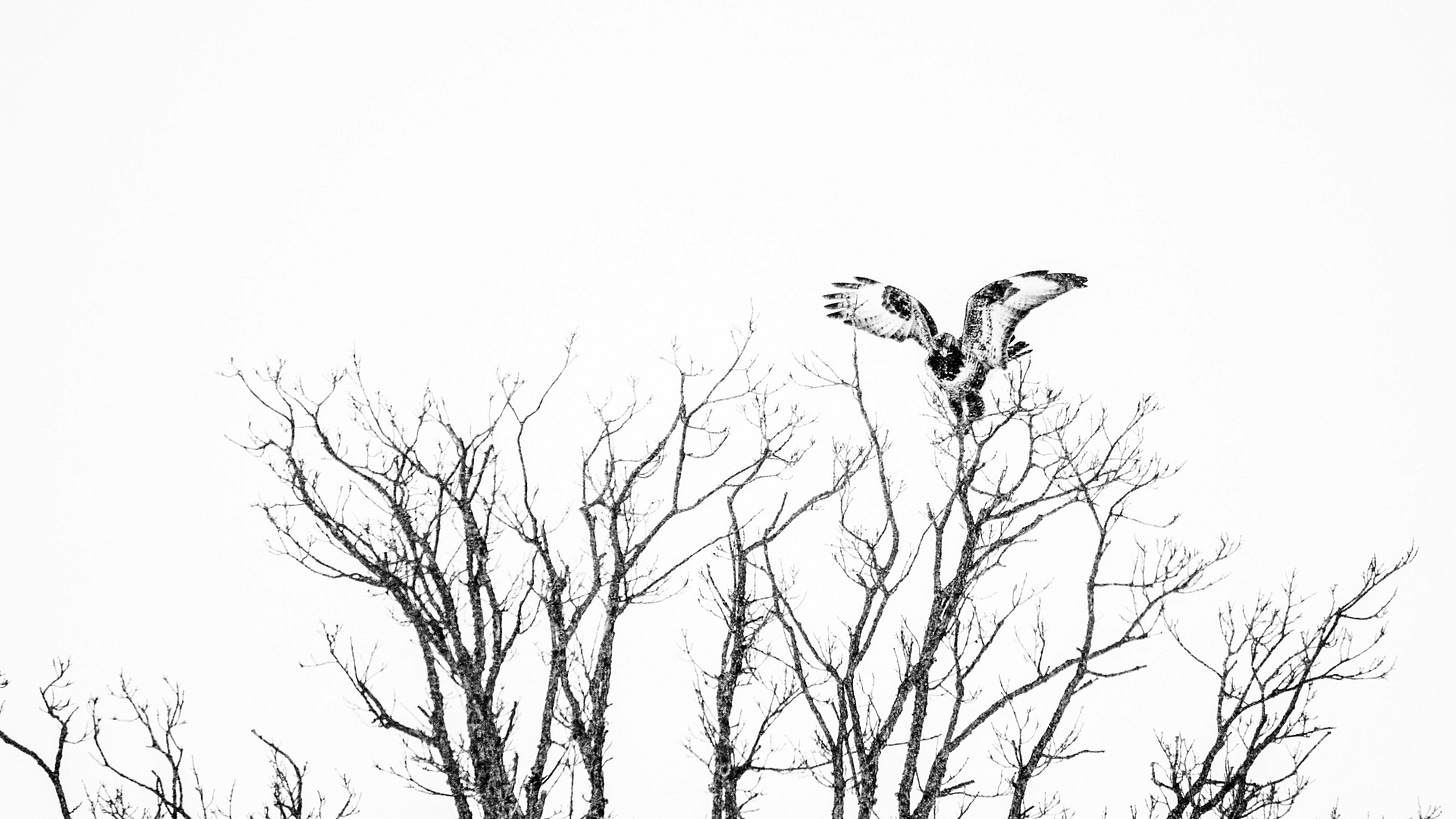
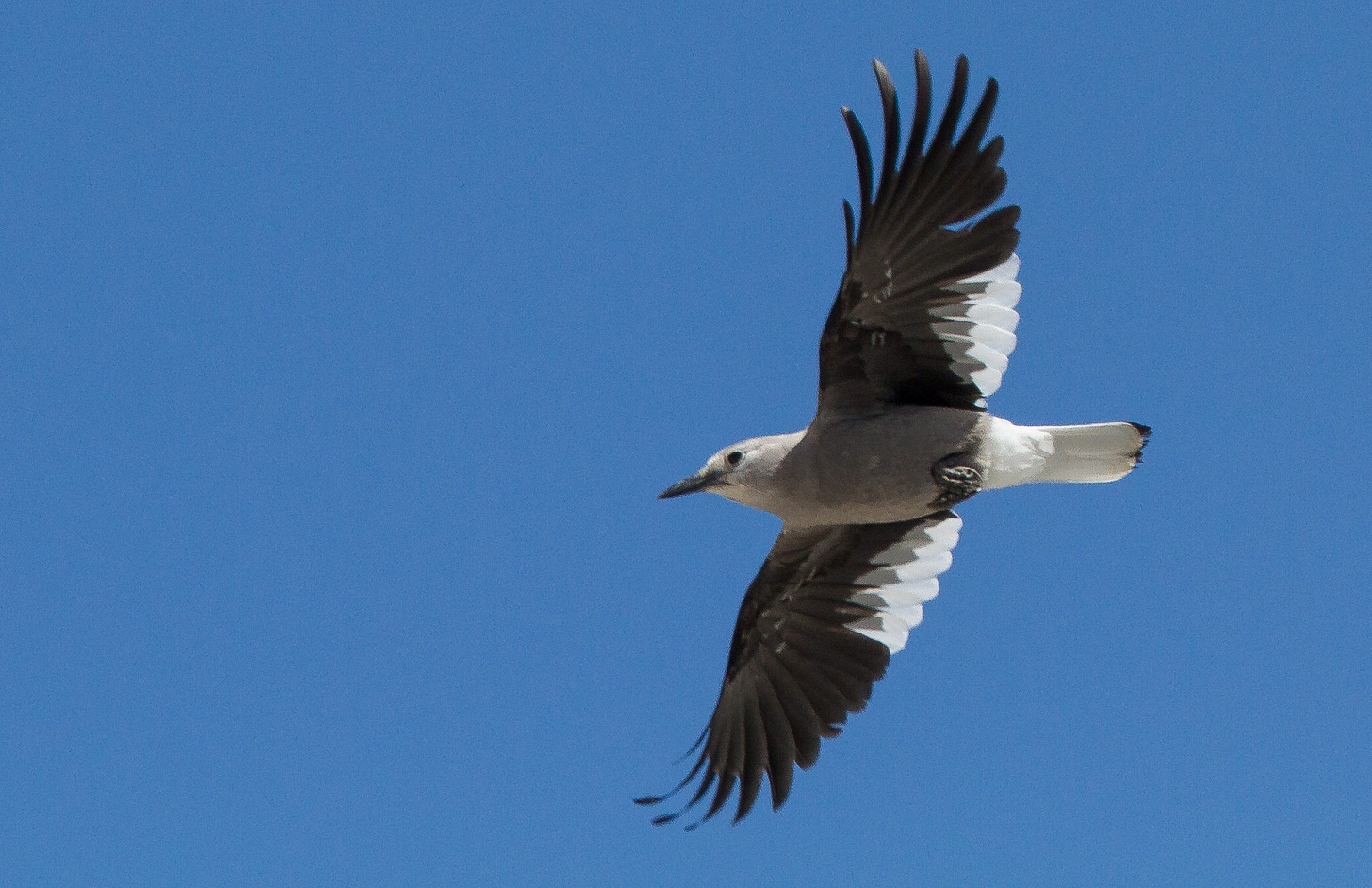



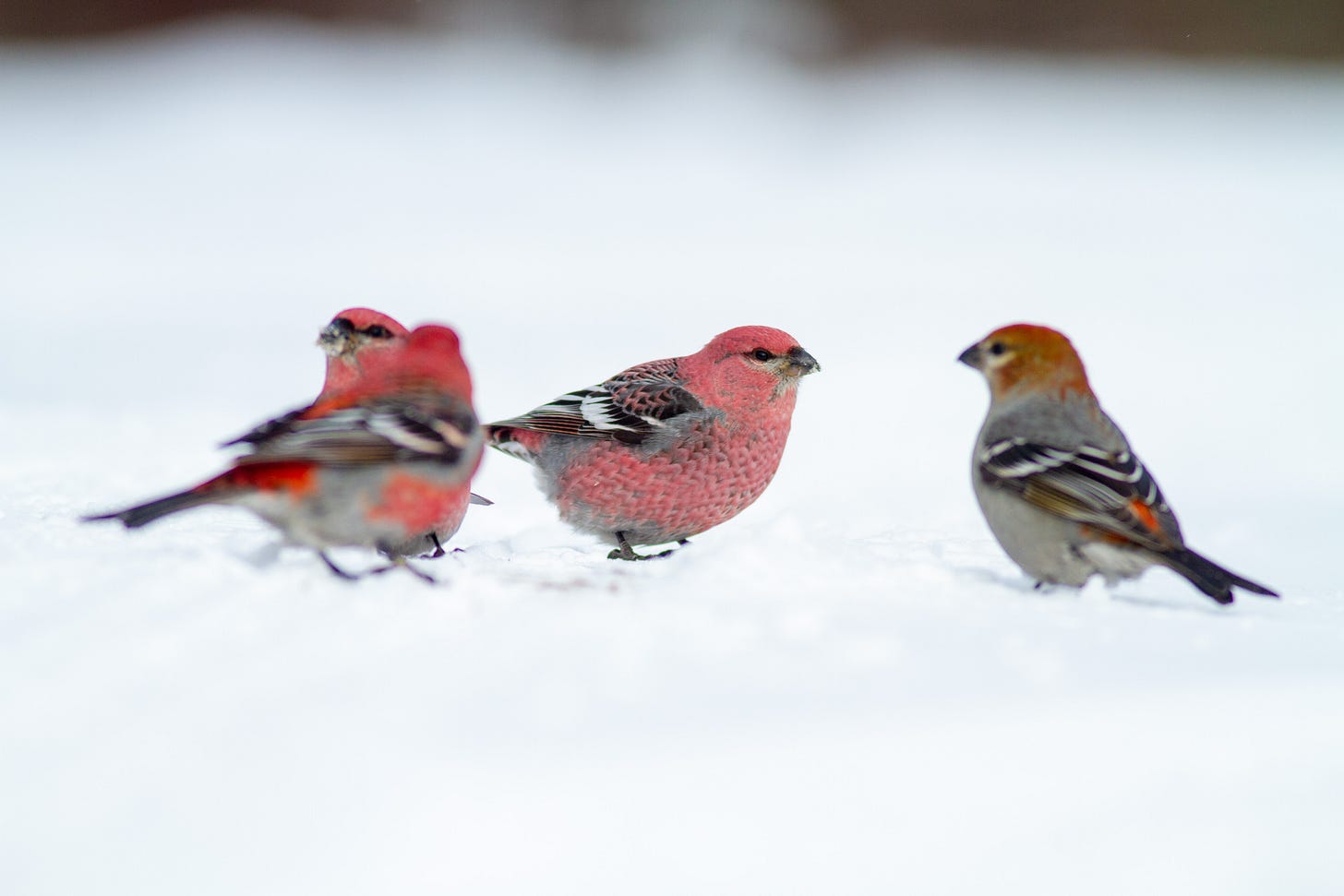
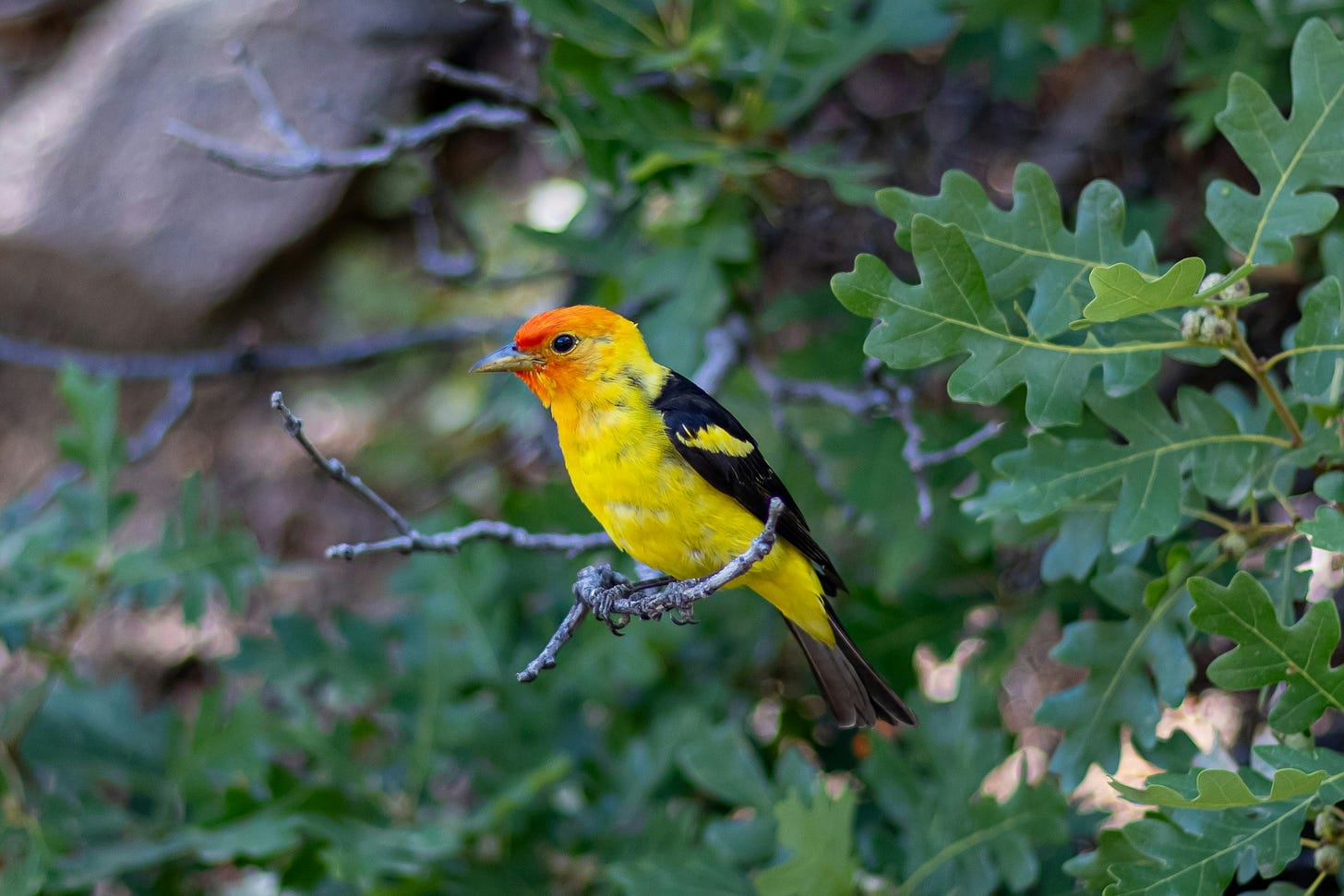

Thank you for this edition of the Northern Naturalist! We LOVED it! Both my wife and I remember very well when we saw a Rough-Legged Hawk at Hawk Ridge a few falls ago. The Rarities section was very special and we “laughed out loud” at the interview with the Western Tanager. We can’t wait for your interview with the Ivory-Billed Woodpecker!!
So, how is buteo pronunciated? "bew-T-oh'" (english slang version?) " bew-teh-oh" (spanish...:) "beauty-oh" (beautiful hawk rendering, Webster: "byoot' e o' " Benson version...? ___________ :)